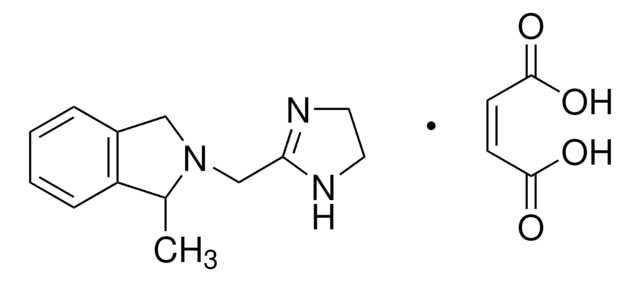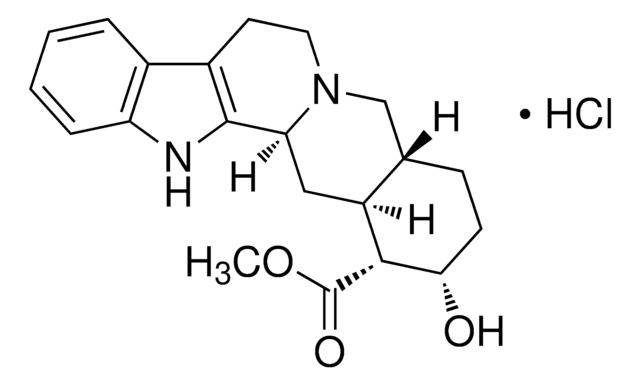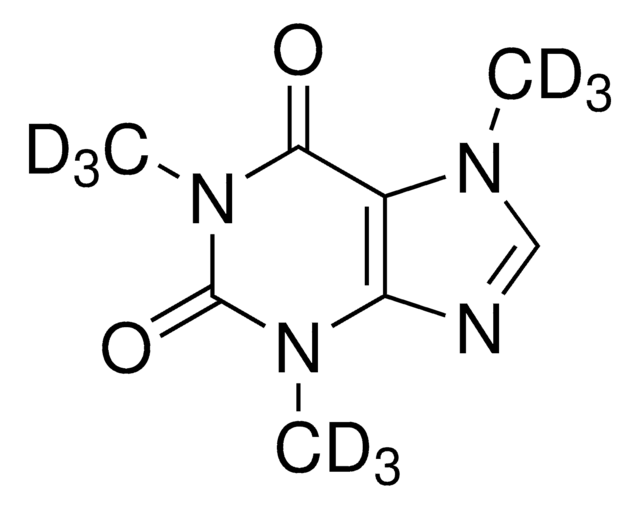C-051
Caffeine solution
1.0 mg/mL in methanol, ampule of 1 mL, certified reference material, Cerilliant®
About This Item
Productos recomendados
grade
certified reference material
form
liquid
feature
SNAP-N-SPIKE®, SNAP-N-SHOOT®
packaging
ampule of 1 mL
manufacturer/tradename
Cerilliant®
concentration
1.0 mg/mL in methanol
technique(s)
gas chromatography (GC): suitable
liquid chromatography (LC): suitable
application(s)
forensics and toxicology
format
single component solution
storage temp.
−20°C
SMILES string
CN1C(=O)N(C)c2ncn(C)c2C1=O
InChI
1S/C8H10N4O2/c1-10-4-9-6-5(10)7(13)12(3)8(14)11(6)2/h4H,1-3H3
InChI key
RYYVLZVUVIJVGH-UHFFFAOYSA-N
Gene Information
human ... ADORA1(134) , ADORA2A(135) , ADORA2B(136) , ADORA3(140)
¿Está buscando productos similares? Visita Guía de comparación de productos
General description
Caffeine belongs to the class of active alkaloid compounds, mainly found in the leaves, fruits, and seeds of about 63 plant species. Coffee beans are the primary source of caffeine, in addition to tea leaves, chocolates, and energy drinks soft drinks. It is a central nervous system stimulant and acts by increasing alertness and reducing sleep.
Application
- To determine caffeine content in an aqueous solution of green coffee beans by two methods based on Fourier transform infrared spectroscopy-attenuated total reflectance (FTIR-ATR) and fluorescence spectrophotometry
- Extraction of caffeine by automated homogeneous liquid-liquid microextraction (A-HLLME) from five different beverage samples for its quantification by high-performance liquid chromatography combined with UV detection
- Simultaneous estimation of caffeine and chlorogenic acids in ground green coffee samples by a UV/Vis spectrometric method
- Multi-residue determination of caffeine and paracetamol by square-wave voltammetry using poly(4-amino-3-hydroxynaphthalene sulfonic acid)-modified glassy carbon electrode (poly(AHNSA)/GCE in coca-cola, pepsi, and tea samples
- Cyclic voltammetric and differential pulse voltammetric based detection and quantitative analysis of paracetamol, tryptophan, and caffeine, both separately and simultaneously, using an electrochemical sensor founded on tin sulfide (SnS)-titanium dioxide (TiO2)-graphene oxide (GO) composite modified glassy carbon electrode
Features and Benefits
- Fully characterized under ISO/IEC 17025 and ISO 17034 accreditation
- Accompanied with a comprehensive Certificate of Analysis (CoA) with data on stability, homogeneity, accuracy of concentration, uncertainty, and traceability
- Rigorously tested through real-time stability studies to ensure accuracy and shelf life
- Gravimetrically prepared using qualified precision balances to ensure minimal uncertainty
- Flame sealed under argon into ampoules for long-term shelf life
- Offered in a convenient, DEA-exempt format to improve laboratory efficiency
Legal Information
related product
signalword
Danger
Hazard Classifications
Acute Tox. 3 Dermal - Acute Tox. 3 Inhalation - Acute Tox. 3 Oral - Flam. Liq. 2 - STOT SE 1
Storage Class
3 - Flammable liquids
wgk_germany
WGK 1
flash_point_f
49.5 °F - closed cup
flash_point_c
9.7 °C - closed cup
Certificados de análisis (COA)
Busque Certificados de análisis (COA) introduciendo el número de lote del producto. Los números de lote se encuentran en la etiqueta del producto después de las palabras «Lot» o «Batch»
¿Ya tiene este producto?
Encuentre la documentación para los productos que ha comprado recientemente en la Biblioteca de documentos.
Los clientes también vieron
Nuestro equipo de científicos tiene experiencia en todas las áreas de investigación: Ciencias de la vida, Ciencia de los materiales, Síntesis química, Cromatografía, Analítica y muchas otras.
Póngase en contacto con el Servicio técnico












